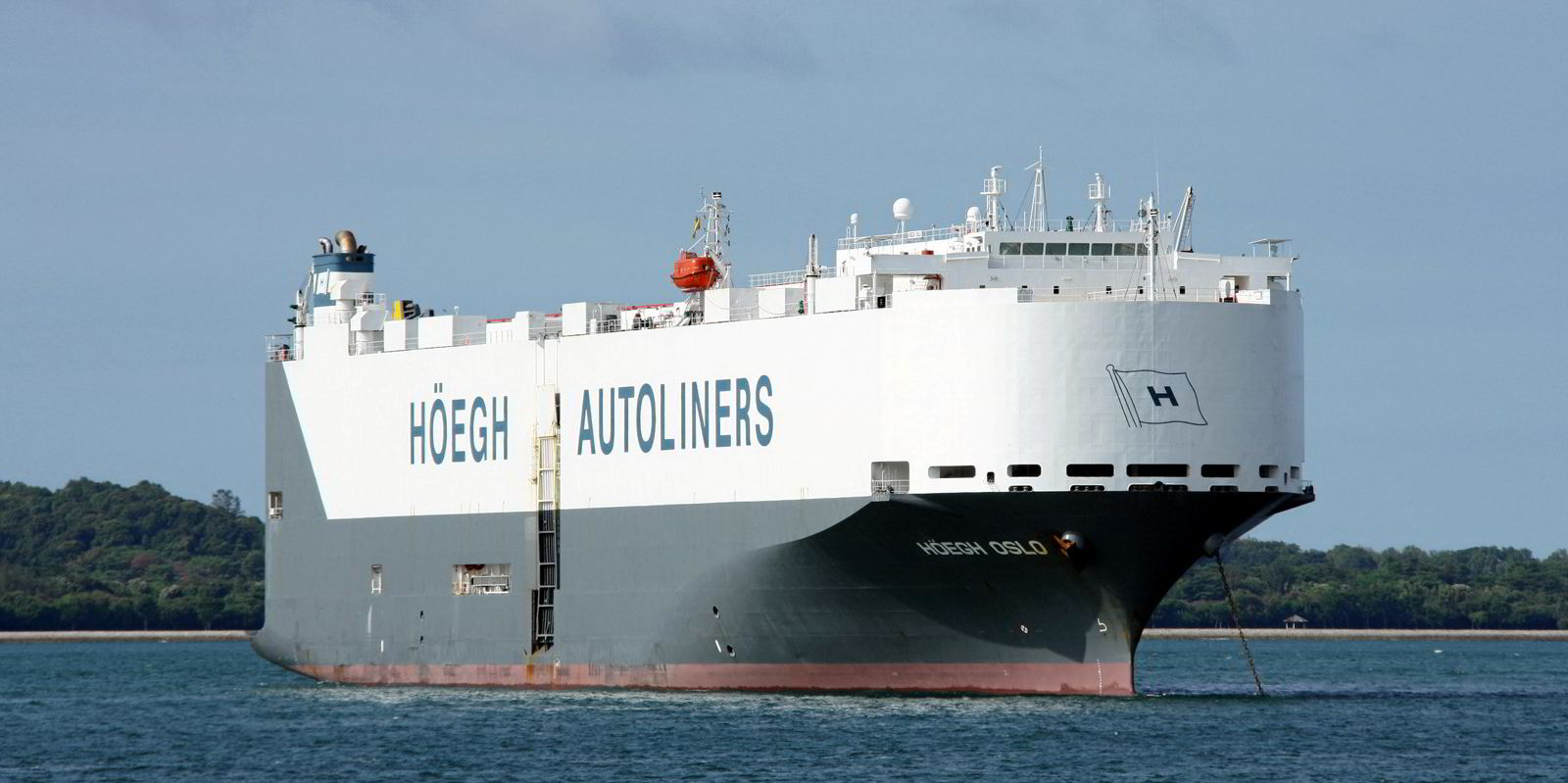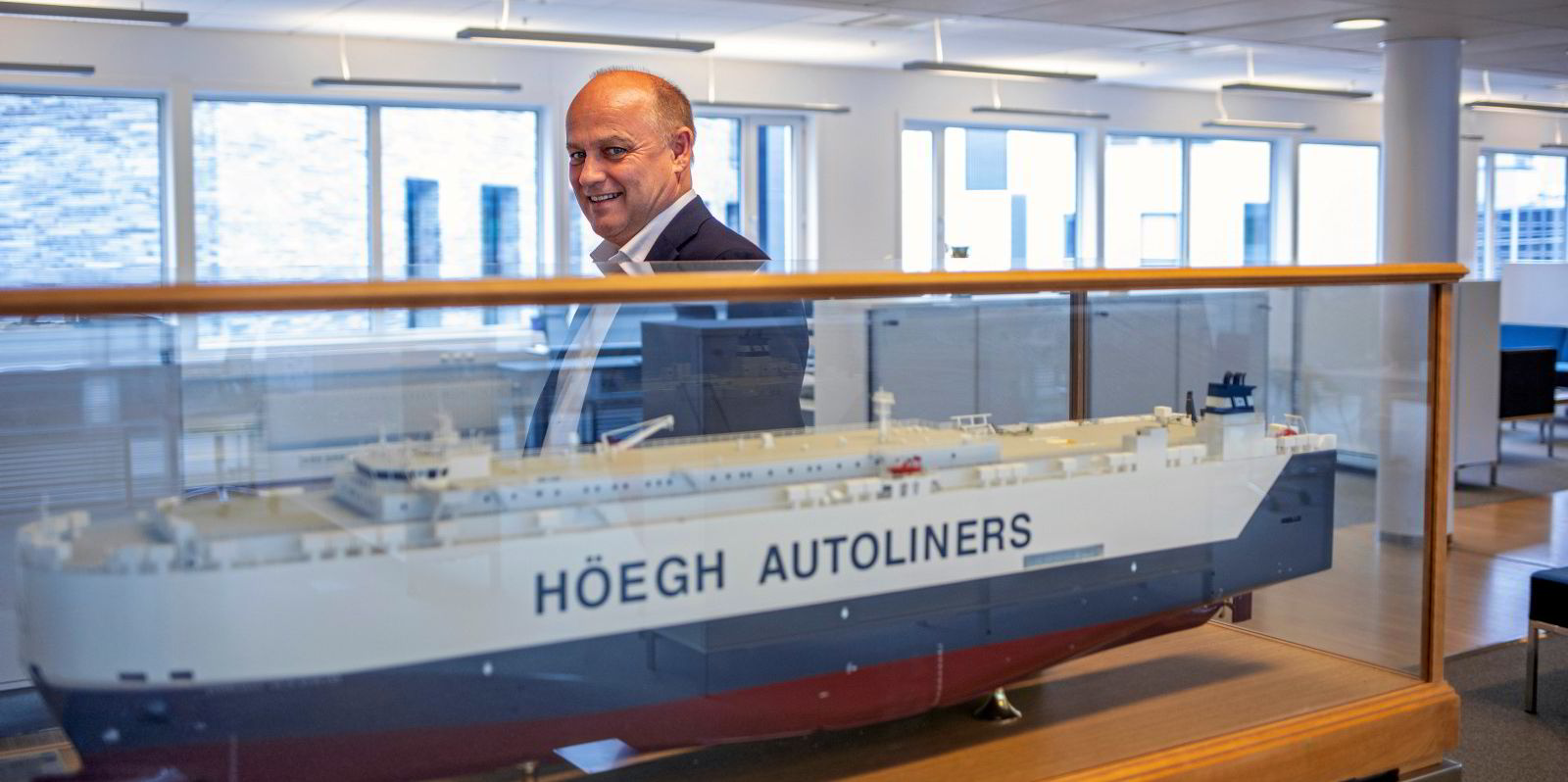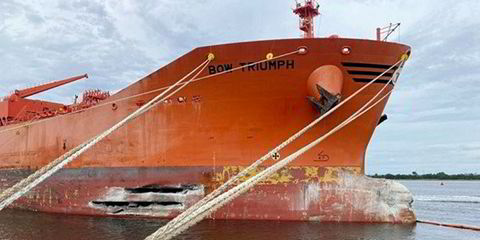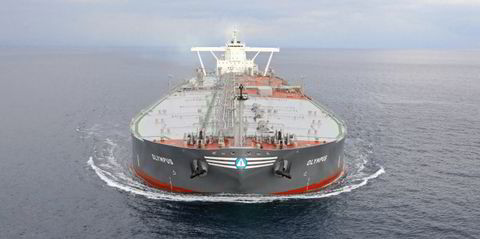Car carrier owners seem unfazed by the incoming glut of newbuildings.
The orderbook currently stands at 31% of the global fleet, according to statistics from Wallenius Wilhelmsen, a percentage number one would expect to loom over a market where owners are consistently reporting robust quarters and, in some cases, record line item results.
But the market is so tight automakers are putting their vehicles in containers — giving reason to believe the market will sop up that new tonnage.
“What we are seeing now, clearly there is a fairly large backlog of new vessels, but I think it’s important to emphasise that these are coming gradually over several years,” Hoegh Autoliners chief executive Andreas Enger said on the company’s third-quarter earnings call.
Enger said Hoegh Autoliners had investigated the issue and found roughly a third of Chinese seaborne auto exports — which have surged as of late thanks to the growth of electric vehicle production — were being carried in containers.
The nontraditional shipping comes as Hoegh Autoliners reports effectively total utilisation across its ships and Oslo-listed rival Gram Car Carriers reports it is sold out for 2023 and only has 4% of revenue days available in 2024.
“Our analysis of the product and our conversations with the [original equipment manufacturers] that do use containers, we believe that is an inferior product,” Enger said, adding that he believes once capacity is available, those automakers will move their cargoes on traditional car carriers.
Gram chief executive Georg Whist agreed with the assessment that containers were a bad way to move vehicles.
He said their use has caused trouble, with containers being delivered to the wrong port and raising costs for buyers as a lack of ventilation and humidity control necessitate cleaning upon delivery.
“Right now, particularly Chinese producers have not yet built up their strategic fleet of car carriers, so right now we’re seeing suboptimal solutions,” Whist said.
Both Hoegh Autoliners and Gram reported records in their third-quarter earnings.
Hoegh Autoliners’ operating profit came in at an all-time high of $185m, $7m more than analyst consensus and $142m on a net basis, while Gram’s $908m backlog is its highest ever.
Gram’s third-quarter profit came in at $25m.
Wallenius Wilhelmsen, the world’s largest car carrier owner, finished well into the black as well, with a $328m profit for the three months to 30 September.
Chief executive Lasse Kristoffersen said the current orderbook works out to 7% annualised fleet growth through 2026.
But he said he expects many ships to age out of the fleet and head to the breakers.
“Structurally we need those vessels,” Kristoffersen said.
“If you take all that together, we are in the range of 5%, 6%, 7% growth of the fleet. Then we need to keep in mind that there is more demand than capacity,” he added. “There is not enough capacity to serve the current demand.”






